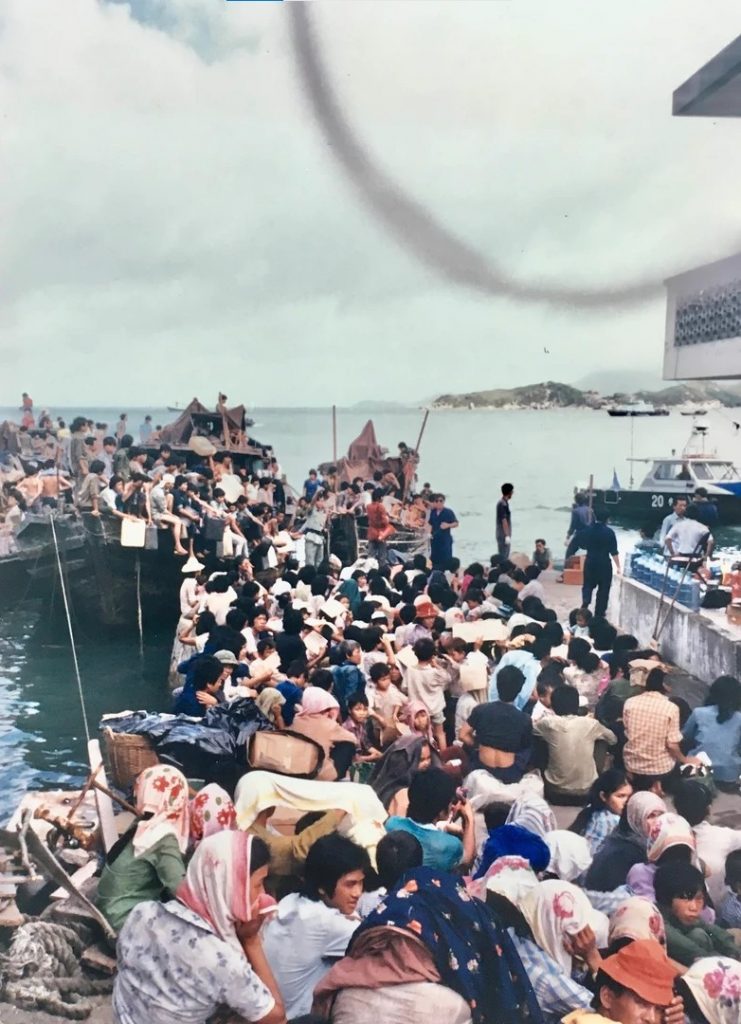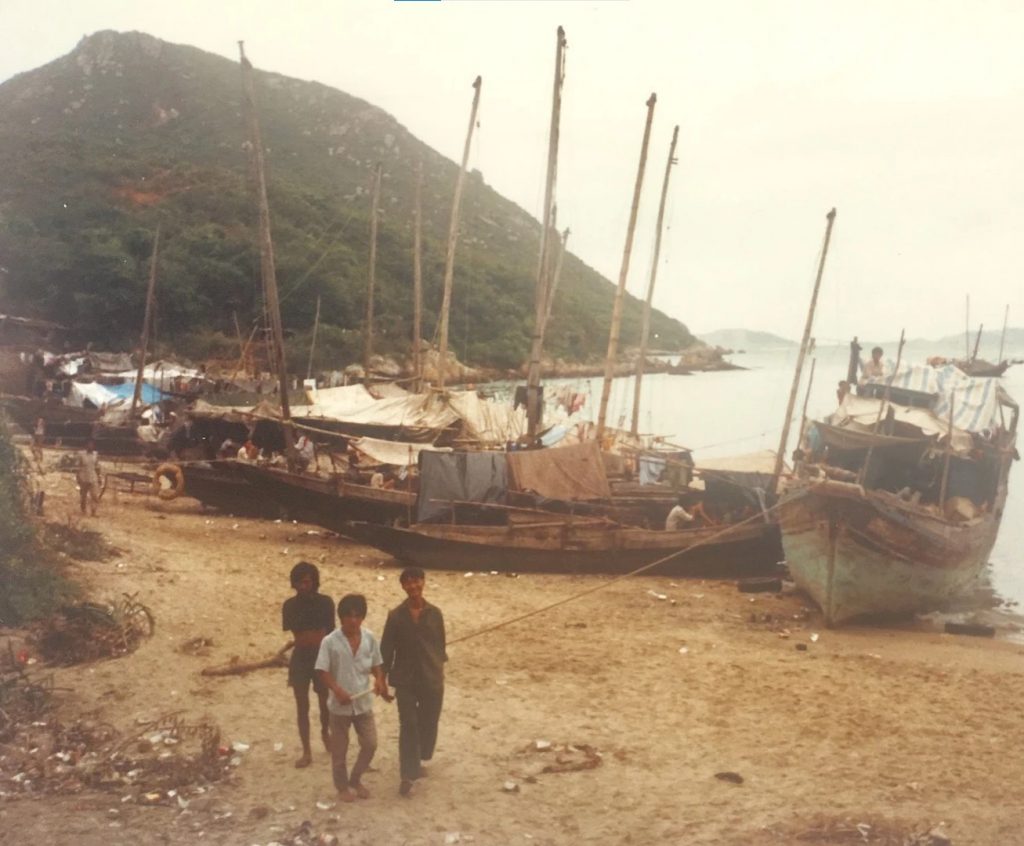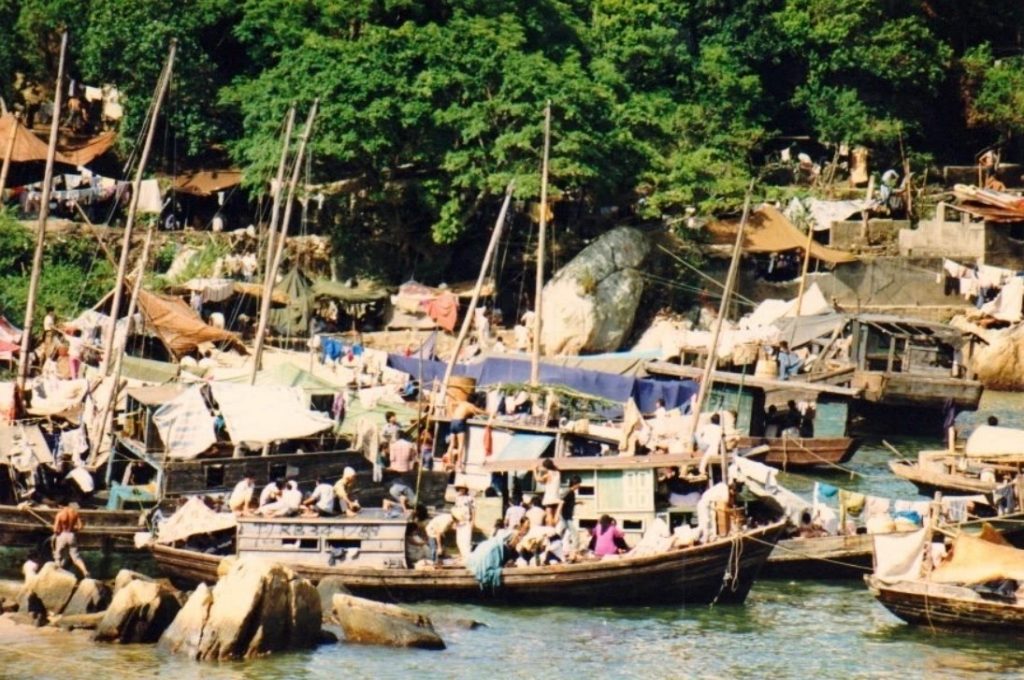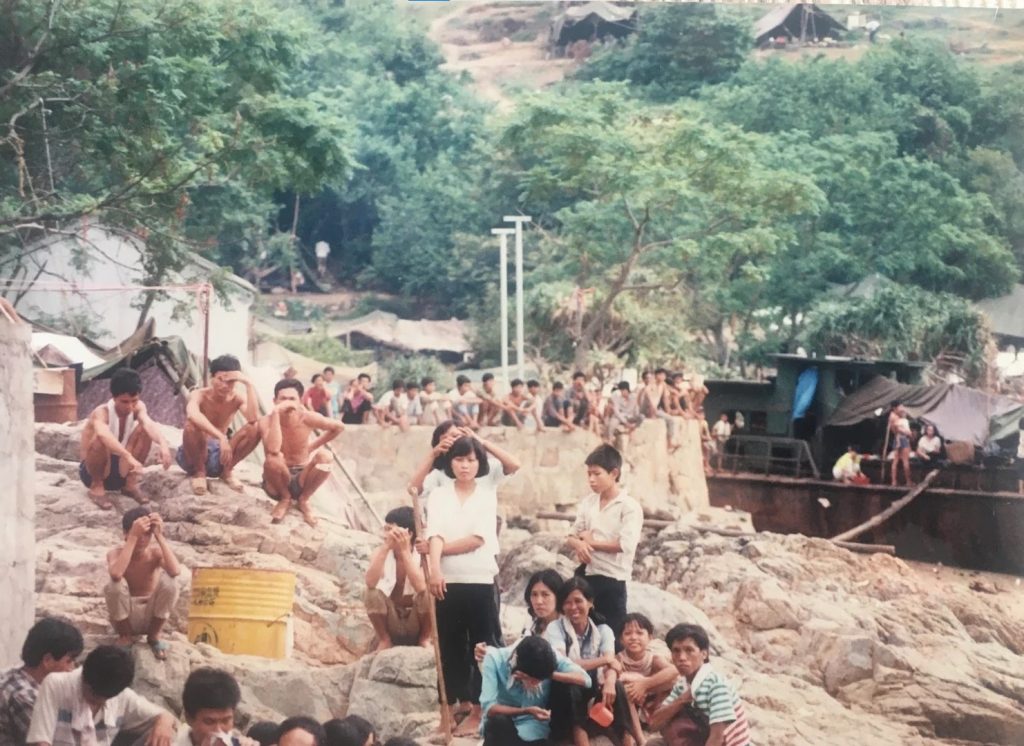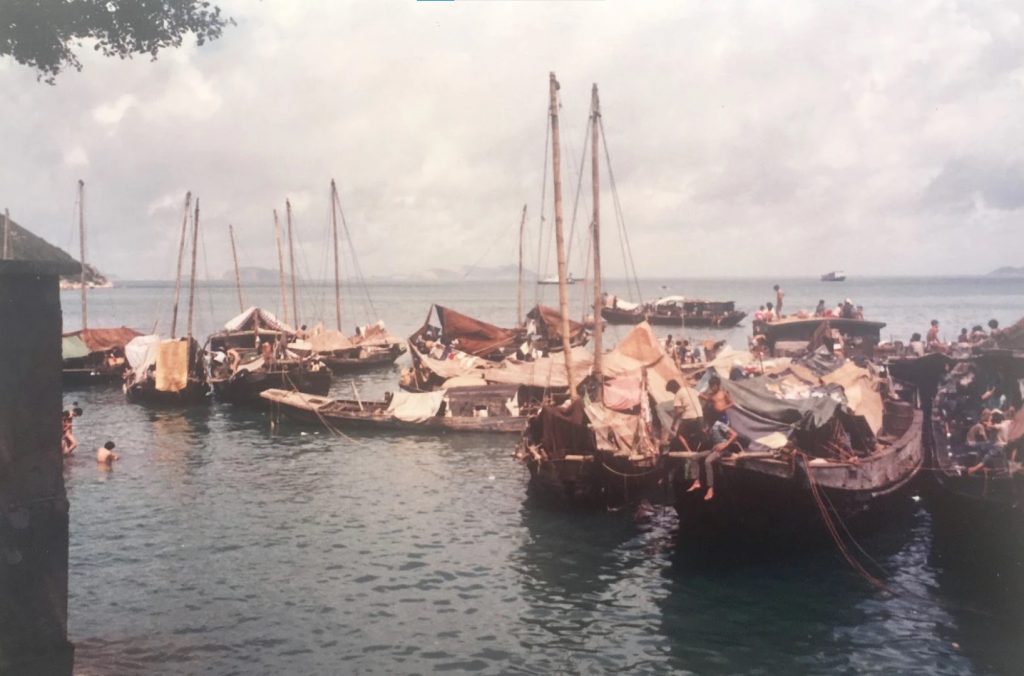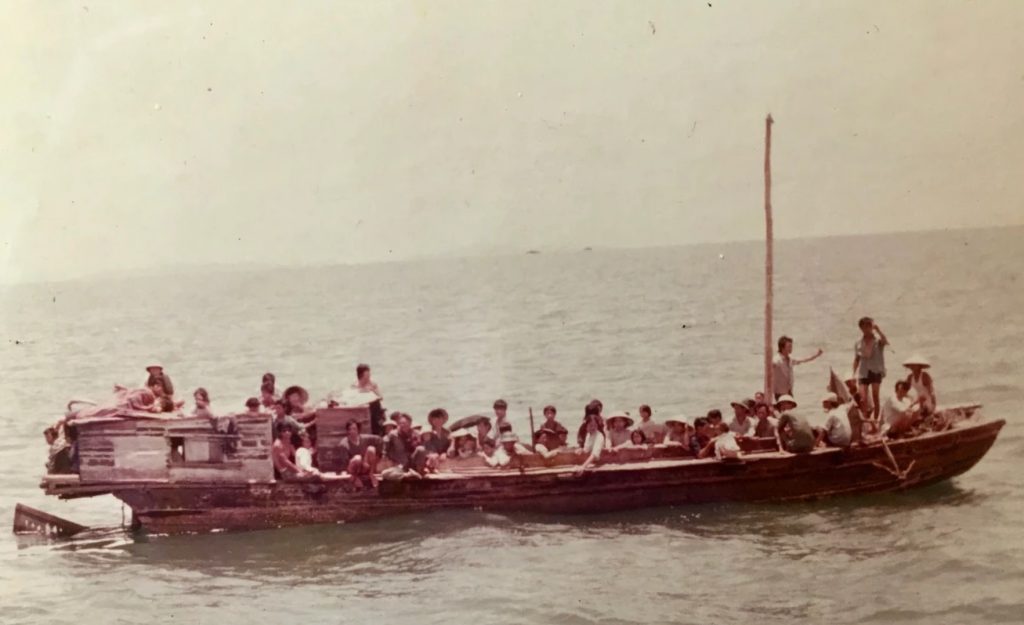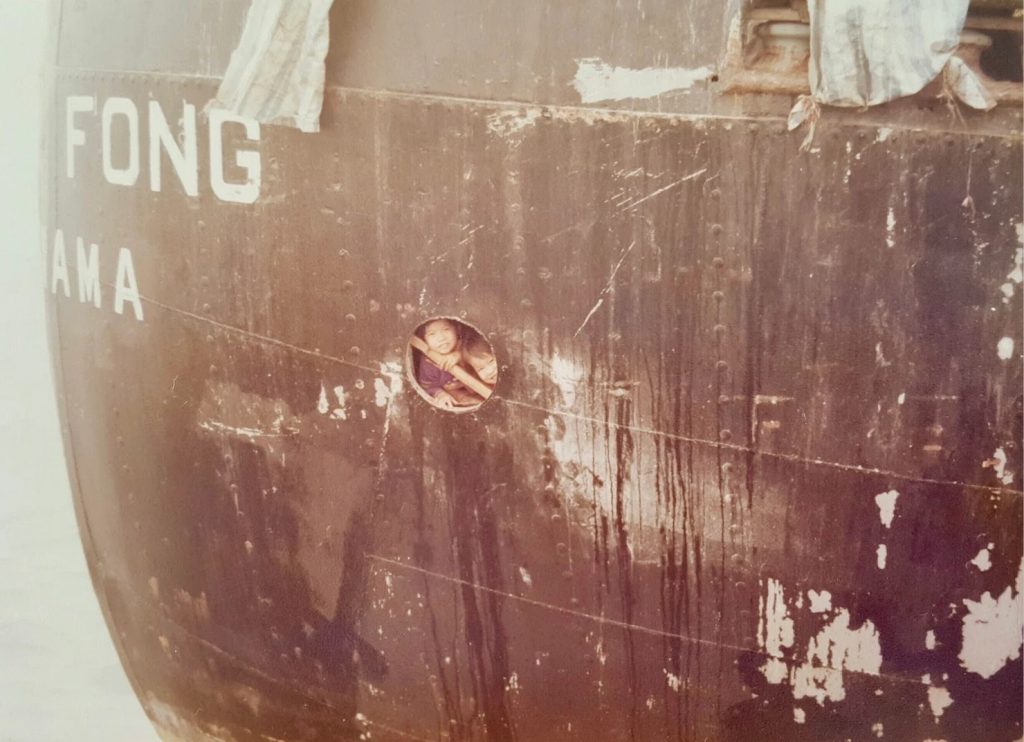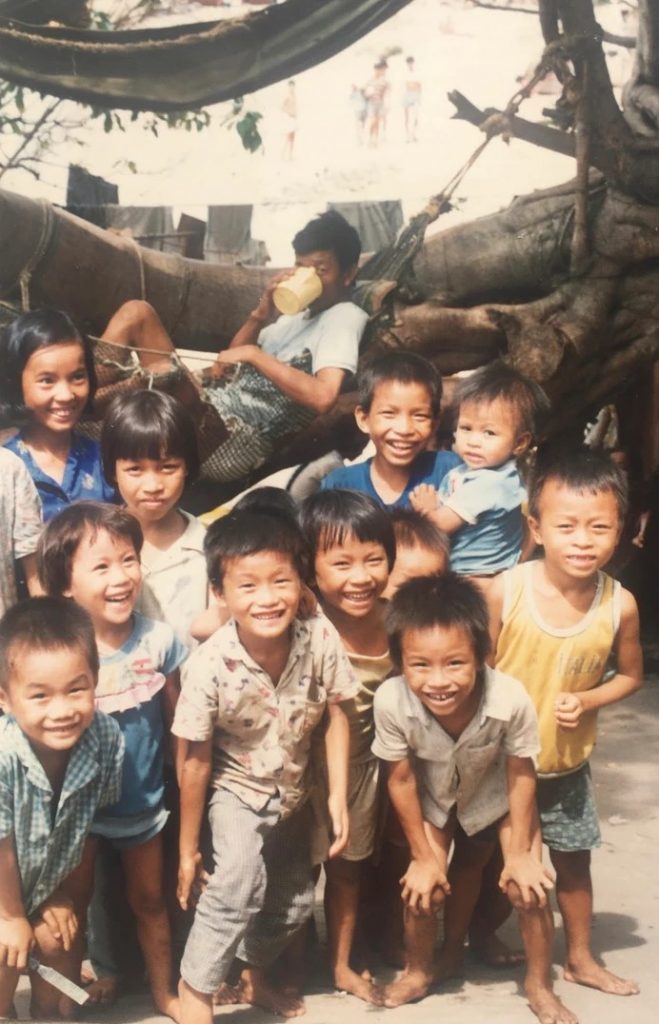The first batch of 3,743 refugees in 1975 had been settled in a civilian refugee camp in Chatham Road pending their resettlement. This camp was to be demolished in 1977 .
On 7 February 1979, some 2,600 refugees aboard the vessel Skyluck which arrived were refused the right to land due to a shortage of facilities, and were kept on board the vessel for over 4 months. The conditions were regarded as being superior to some terrestrial “transit camps”. On 29 June 1979, some refugees cut the anchor chain, causing the 3,500-ton ship to drift into rocks near Lamma Island, and sink.
In June 1979, a camp was set up on a site adjacent to the Police station at Sham Shui Po (closed March 1981), another was opened at Jubilee (closed November 1980); the Government opened the former Argyle Street Army camp to accommodate an estimated 20,000 refugees; the Kai Tak East camp was set up to house an estimated 10,000; a 23-storey factory building in Tuen Mun to house an additional 16,000 was set up,[20] temporary facilities were established at the Government Dockyard and Western Quarantine Anchorage.
The Chimawan Detention Centre would become the first closed camp after the Government passed the Immigration (Amendment) Bill 1982, set up on 2 July. Plans for a second camp, at Hei Long Chau, were initiated at the end of July, shortly after the arrival of 1,523 refugees in the month. Another closed camp was set up in Cape Collinson.
The Whitehead camp was set up in Wu Kai Sha, Sha Tin District, to accommodate 28,000. Later, from June 1989, the runway of the former military airfield at Sek Kong was turned into a holding facility to house an estimated 7,000 refugees, amidst protests from local residents. Prior to the 1997 handover, the facility reverted to as an airfield and is now used by the PLA Air Force.
Source: Wikipedia


